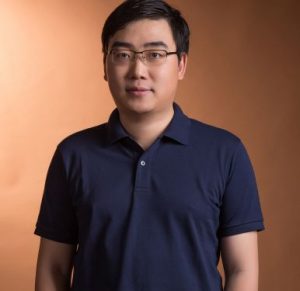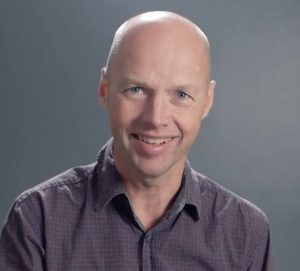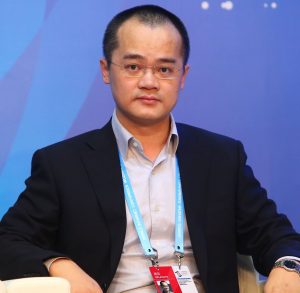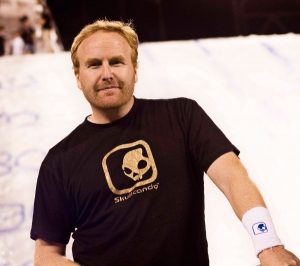Jamie Siminoff : A Lifelong Inventor Who Founded World’s First Wi-fi Video Doorbell
‘Failing at the beginning is not always the end.” says the American entrepreneur and the founder of Ring, the world’s first wi-fi video doorbell, Jamie Siminoff. The journey of this entrepreneur has been quite tough but amusing and gives us the lesson that sometimes the biggest business ideas are hidden in small things, but we are not aware of their potential.
Jamie Siminoff was born and brought up in Chester, New Jersey. He was a naughty but creative child. After school, he used to spend most of his time building things. By building things, he came across to very basic but major chemical, mechanical, and electrical engineering stuff. He was never into academics, but later, started working hard to get A grade in tests, as his father had promised him if he would get As in his exams, he will be able to get his favourite Land Rover Defender 90. And after school, his father brought him his favourite car as promised.
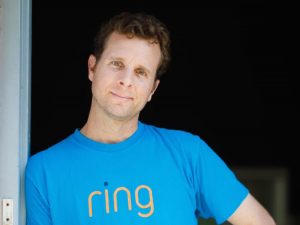
Jamie after completing his high school joined the Babson College in Wellesley, Massachusetts. In college, he studied entrepreneurship and even won a business plan competition. He also received an offer worth $10,000 for writing a business plan while in college.
In college, he also used to paste posters around the campus saying that he would do anything for $10. These small jobs helped him learn new things.
After completing his college, Jaime was back into his garage, and with a few college mates, started working on different products. During the time, his wife, Erin complained that while he used to be in the garage, he would not answer the doorbell. So he started looking for a doorbell that was connected to a mobile app such that it could be answered from his garage without going to the main door.
After looking for a good long time, he found out that there were lots of video doorbells, but he did not find any doorbell that could fulfil his requirement. This was the point when he thought of building a wifi doorbell, that was safer and could be answered from a farther place, even outside the house.
According to Jaime, conceiving the idea was easy, but getting it done was tough. So without thinking more, he started working on this new product with his friends and built a prototype for the same. The next thing was to pitch the idea in front of investors, to get the backup for the product. And, the first thing he got to hear was, “It is impossible.”
But being a stubborn kid, Jaime wanted to prove that investor wrong, and finally, in 2011, built the first version of the device, DoorBot. The device had a few flaws but was good enough to find investors.
In 2013, he received an email from Shark Tank producer, in which he was invited to participate in the American business-related reality television series, Shark Tank. It was a tough time for him, as he was almost broke. So getting an email from a TV show, where he could win money to invest in his company, was like a ray of hope.
Though he did not win any capital in the show, he was able to reach more people with his idea as his product received free marketing. As a result, people started ordering DoorBot to gift it to people in festivals. Also, the product came into the eyes of many investors who became interested in it.
One of his first biggest investors Richard Branson came across to this product when one of his guests was remotely talking to a delivery guy at his doorsteps through an app. Branson was fascinated with the product and contacted Jaime for investment.
Later, during an investment pitch, he rebranded the product to Ring, as one of his investors suggested, “You said ‘ring’ about 1,000 times, just call it Ring.”
This was the start of his good time with the company, and in 2016, he even got the famous NBA legend Shaquille O’Neal to be the spokesperson for his company, who was also a customer of Ring and loved the way it worked. In fact, O’Neal himself had reached out to meet the CEO of Ring, Jaime, to thank for such safe invention.
In early 2018, news of Jeff Bezos making the second biggest investment in Ring, i.e. of a $1 billion, started making rounds, and finally, in February 2018, acquired the company with a worth estimated value of between $1.2 billion and $1.8 billion.
Before Ring, Jaime had also founded PhoneTag, the world’s first voicemail-to-text company, and Unsubscribe.com, a service to clean commercial email from inboxes.
Jaime says that the serial entrepreneurs are looking for that right product that they really want to sell, and Jaime found Ring which he believed in the most, and his persistence and faith helped him to get to the position where he stands today.

Yashica is a Software Engineer turned Content Writer, who loves to write on social causes and expertise in writing technical stuff. She loves to watch movies and explore new places. She believes that you need to live once before you die. So experimenting with her life and career choices, she is trying to live her life to the fullest.


